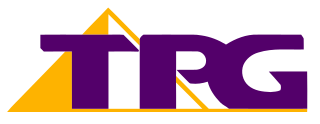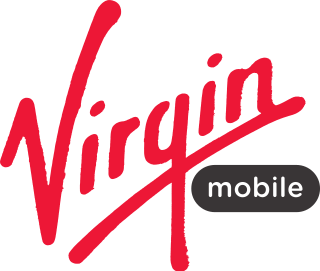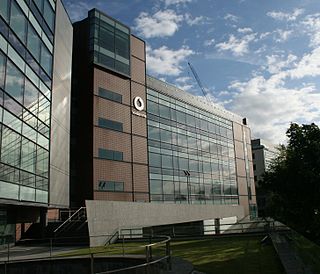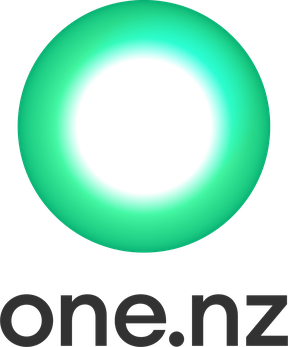
Telstra Group Limited is an Australian telecommunications company that builds and operates telecommunications networks and markets related products and services. It is a member of the S&P/ASX 20 and Australia's largest telecommunications company by market share.

Telecommunications in Australia refers to communication in Australia through electronic means, using devices such as telephone, television, radio or computer, and services such as the telephony and broadband networks. Telecommunications have always been important in Australia given the "tyranny of distance" with a dispersed population. Governments have driven telecommunication development and have a key role in its regulation.

ihug was New Zealand's third largest ISP, before it was bought, then absorbed by Vodafone New Zealand. According to 2005 estimates, it had over 100,000 internet and phone subscribers. Before 2000 ihug was New Zealand's largest ISP but as other ISPs began offering flat rate services, some customers opted to transfer to those providers.
Singtel Optus Pty Limited is an Australian telecommunications company headquartered in Macquarie Park, a suburb in the Northern Sydney region of Sydney, New South Wales, Australia. It is a wholly owned subsidiary of Singaporean telecommunications company Singtel.

Spark New Zealand Limited is a New Zealand telecommunications and digital services company providing fixed-line telephone services, mobile phone services, broadband, and digital technology services including cloud, security, digital transformation, and managed services. Its customers range from consumers to small - medium business, government agencies and large enterprise clients. It was formerly known as Telecom New Zealand until it was rebranded to Spark in 2014. It has operated as a publicly traded company since 1990. Spark's mobile network reaches 98% of New Zealand, with over 2.5 million mobile connections and 704,000 broadband connections

Vodafone Group plc is a British multinational telecommunications company. Its registered office and global headquarters are in Newbury, Berkshire, England. It predominantly operates services in Asia, Africa, Europe, and Oceania.

iiNet Limited is an Australian internet service provider and telecommunications company that sells NBN plans, 4G and 5G Home Wireless Internet and services on its ULTRA Broadband Cable, FTTB and VDSL2 networks. It also sells mobile phone sim-only plans using the Vodafone network.

TPG is an Australian internet service provider that specialises in consumer and business internet services as well as mobile telephone services. As of August 2015, TPG is the second largest internet service provider in Australia and is the largest mobile virtual network operator. As such, it has over 671,000 ADSL2+ subscribers, 358,000 landline subscribers and 360,000 mobile subscribers, and owns the second largest ADSL2+ network in Australia, consisting of 391 ADSL2+ DSLAMs. It also operates in New Zealand.

Virgin Mobile is a wireless communications brand used by seven independent brand-licensees worldwide. Virgin Mobile branded wireless communications services are available in the United Kingdom, Ireland, Canada, Colombia, Chile, Kuwait, Saudi Arabia, United Arab Emirates, Poland and Mexico. Virgin Mobile branded services used to be offered in Australia, France, Singapore, India, Qatar, South Africa and the United States.

Vodafone Ireland Limited, a wholly owned subsidiary of the Vodafone Group, is a mobile phone network and broadband provider in Ireland. It was created when the Vodafone Group bought Eircell, the mobile arm of Telecom Éireann. As of September 2019, Vodafone has 26% of broadband subscribers, and 43% of mobile phone subscribers.
Vodafone Limited, trading as Vodafone UK, is a British telecommunications services provider, and a part of Vodafone Group Plc, the world's second-largest mobile phone company. Vodafone is the third-largest mobile network operator in the United Kingdom, with 18.5 million subscribers as of February 2024, after O2 and EE, followed by Three. The country's first cellular phone call was made on the Vodafone network in 1985.

One New Zealand Group Limited, stylised as One NZ, is a New Zealand telecommunications company. One NZ is the largest wireless carrier in New Zealand, accounting for 38% of the country's mobile share market in 2021.

TelstraClear Limited was New Zealand's second-largest telecommunications company before being acquired by Vodafone New Zealand in October 2012, previous to which it was a subsidiary of Australian company Telstra.

The Link was an internet based mobile phone and communications retailer in the United Kingdom. It was owned by Dixons Retail, the United Kingdom's largest consumer electronics retail group, and traded online through a dedicated retail website, which in addition to mobile phones also offered satellite navigation systems and broadband Internet services.
John Ilhan was an Australian businessman. He was the founder of Crazy John's mobile phone retail chain and, in 2003, was the richest Australian under 40 years of age.

Primus Telecommunications Pty Ltd. is an Australian telecommunications company and wholly owned subsidiary of Vocus Communications that primarily focuses on fixed, mobile, and broadband services.

Hutchison 3G Enterprises S.A.R.L., trading as 3 (Three) and Hutchison 3G, is the owner of several originally UMTS-based mobile phone networks and broadband Internet providers, which operate in Hong Kong, Macau, Austria, Denmark, Indonesia, Ireland, Italy, Sweden, and the United Kingdom.
In telecommunications, 4G is the fourth generation of cell phone mobile communications standards. It is a successor to the third generation (3G) standards. A 4G system provides mobile "ultra-broadband" Internet access. Major Australian telecommunications companies, and most resellers that use one of these major telcos, have been rolling out and continuing to upgrade 4G since 2011/2012.

Mobile by Sainsbury's was a mobile virtual network operator (MVNO) in the UK, operated by Sainsbury's between July 2013 and January 2016, using the Vodafone UK network.
Vodafone Australia is an Australian telecommunications brand providing mobile and fixed broadband services. Vodafone’s mobile network covers more than 23 million Australians, and Vodafone has commenced the rollout of its 5G mobile network. Vodafone NBN fixed broadband services are available in capital cities and selected regional centres. Vodafone is the third-largest wireless carrier in Australia, with 5.8 million subscribers as of 2020.














